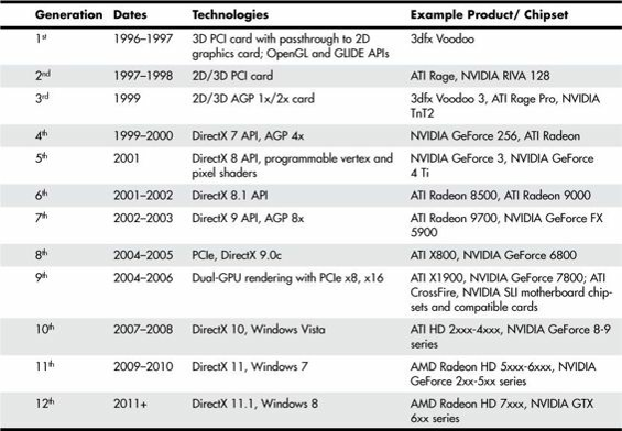Hardware Reference
In-Depth Information
To construct an animated 3D sequence, a computer can mathematically animate the sequences
between keyframes. A keyframe identifies a specific point. A bouncing ball, for example, can have
three keyframes: up, down, and up. Using these frames as reference points, the computer can create
all the interim images between the top and bottom. This creates the effect of a smoothly bouncing ball.
After it has created the basic sequence, the system can then refine the appearance of the images by
filling them in with color. The most primitive and least effective fill method is called
flat shading
, in
which a shape is simply filled with a solid color.
Gouraud shading
, a slightly more effective
technique, involves the assignment of colors to specific points on a shape. The points are then joined
using a smooth gradient between the colors.
A more processor-intensive (and much more effective) type of fill is called
texture mapping
. The 3D
application includes patterns—or textures—in the form of small bitmaps that it tiles onto the shapes
in the image, just as you can tile a small bitmap to form the wallpaper for your Windows desktop. The
primary difference is that the 3D application can modify the appearance of each tile by applying
perspective and shading to achieve 3D effects. When lighting effects that simulate fog, glare,
directional shadows, and others are added, the 3D animation comes close indeed to matching reality.
Until the late 1990s, 3D applications had to rely on support from software routines to convert these
abstractions into live images. This placed a heavy burden on the system processor in the PC, which
has a significant impact on the performance not only of the visual display, but also of any other
applications the computer might be running. Starting in the period from 1996 to 1997, chipsets on
most video adapters began to take on many of the tasks involved in rendering 3D images, greatly
lessening the load on the system processor and boosting overall system performance.
There have been roughly 12 generations of 3D graphics hardware on PCs, a process that has lasted
more than 15 years, as detailed in
Table 12.16
.
Table 12.16. Brief History of 3D Acceleration
With virtually every recent graphics card on the market featuring DirectX 10 or greater capabilities,


